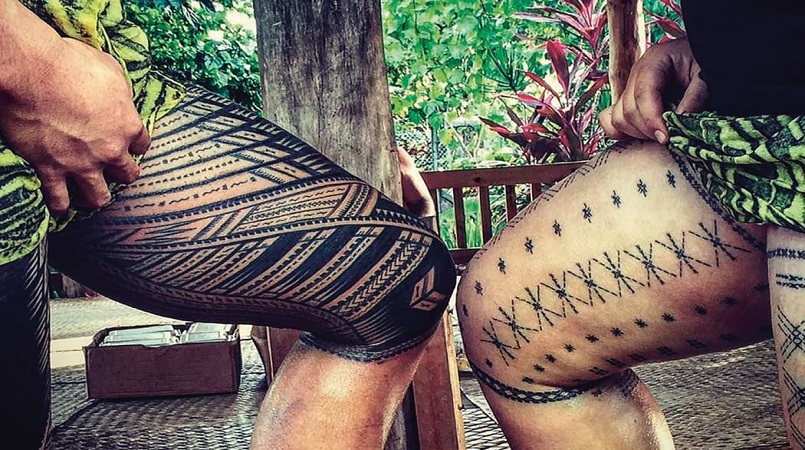
The traditional Samoan tattoo goes by many names, it's called the tatau, malofie and known colloquially as the pe'a, while the traditional female tattoo is known as the malu.
It holds deep cultural and historical significance in the Samoan culture. It is a traditional form of body art that has been practiced for centuries and continues to be a cherished part of Samoan culture.
The tatau represents not only a beautiful work of art but also serves as a symbol of identity, heritage, and personal achievements.
The art of tatau is deeply rooted in Samoan mythology, social structure, and pre-colonial spirituality. The origins of the tatau are recalled in the legend of Taemā and Tilafaigā, two Siamese twin demigoddesses who swam from the islands of Fiji bringing knowledge of tatau and the tools of the trade of Samoa.
It is a complex and intricate process that involves the use of various tools and techniques. Traditionally, the tatau is done by skilled tattooists known as tufuga ta tatau who have undergone years of rigorous training and apprenticeship.
While the structure of the tatau is uniform across all those who wear it, the designs, patterns, and motifs on each tatau is unique to the individual and is carefully crafted by the tufuga to tell their personal story. The motifs and patterns used in the tattoo reflect the individual's genealogy and experiences.
The tattooing process is often seen as a rite of passage, marking significant milestones in a person's life such as reaching adulthood, marriage, or achieving a particular social status. Some even hold the tatau as one's preparation for entering le saofa'iga a matai (the village council of chiefs).
In Samoan society, the tatau holds a position of profound respect and honour. It is considered a symbol of strength, bravery, and resilience. The process of receiving the tatau is intense and requires the person to endure significant pain and discomfort. This endurance is seen as a testament to their courage and ability to withstand challenges in life.
The tatau also plays a crucial role in preserving Samoan cultural heritage. It serves as a visual reminder of the community's shared history, values, and traditions. The tattooing ceremonies are often accompanied by rituals, prayers, and singing, creating a profound spiritual connection between the individual, their ancestors, and the ancient gods of Samoa.
The tatau has gained recognition beyond the Samoan islands and has become a symbol of Polynesian culture worldwide, influencing tattooing practices in other Pacific Island nations and has also found popularity among tattoo enthusiasts around the globe.
